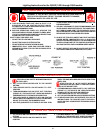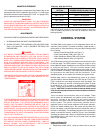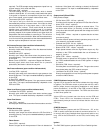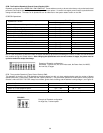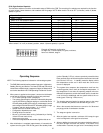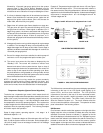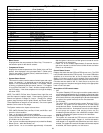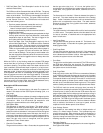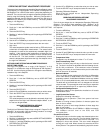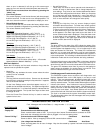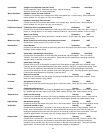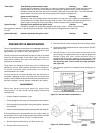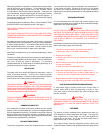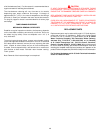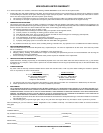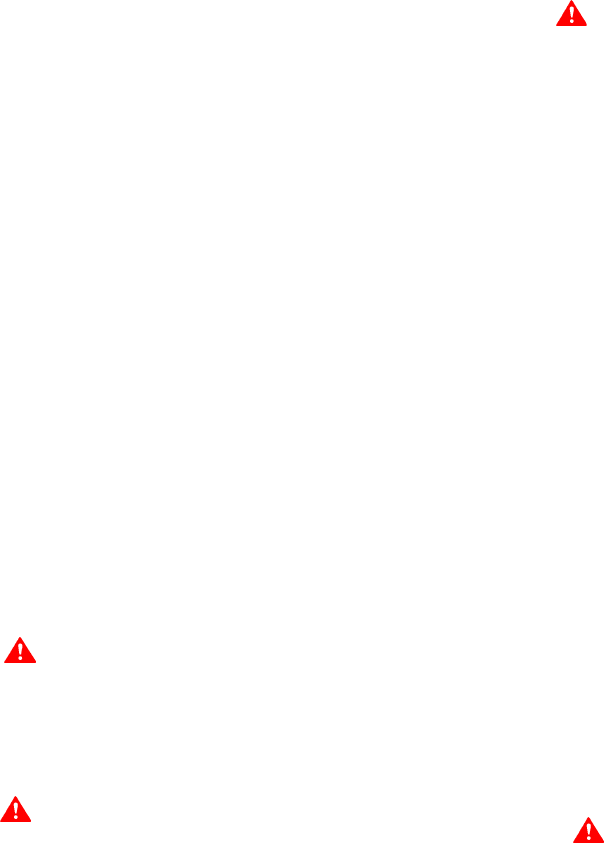
45
After placing the boiler in operation, check the ignition system safety
shut-off devices for proper operation. To accomplish this with the
main burners operating, close the valve on the manifold. Within
four seconds the main burners should extinguish. If this does not
occur immediately, discontinue gas supply by closing main manual
shut-off and call a qualified serviceman to correct the situation. If
the burners extinguish, then light boiler in accordance with lighting
and operating instructions.
For installations above 4,500 feet (1350 m), refer to HIGH ALTITUDE
INSTALLATIONS in the installation section. See page 5.
THE FLOW OF COMBUSTION AIR TO THE BOILER MUST NOT BE
OBSTRUCTED.
THE BOILER AREA MUST BE KEPT CLEAR AND FREE FROM
COMBUSTIBLE MATERIALS, GASOLINE AND OTHER FLAMMABLE
VAPORS AND LIQUIDS.
Any safety devices including low water cutoffs used in conjunction
with this boiler should receive periodic (every six months) inspection
to assure proper operation. A low water cutoff device of the float
type should be flushed every six months. Periodic checks, at least
twice a year, should be made for water and/or gas leaks.
More frequent inspections may be necessary depending on water
conditions.
The boiler-mounted gas and electrical controls have been designed
to give both dependable service and long life. However, malfunction
can occur, as with any piece of equipment. It is therefore
recommended that all components be checked periodically by a
qualified serviceman for proper operation.
RELIEF VALVE
The safety relief valve should be opened at least twice a year to
check its working condition. This will aid in assuring proper
pressure relief protection. Lift the lever at the top of the valve several
times until the valve seats properly and operates freely.
DANGER
THE WATER PASSING OUT OF THE VALVE DURING CHECKING
OPERATION MAY BE EXTREMELY HOT. BEFORE OPERATING
RELIEF VALVE, MAKE SURE DRAIN LINE IS INSTALLED TO DIRECT
DISCHARGE TO A SAFE LOCATION SUCH AS AN OPEN DRAIN,
TO AVOID SCALDING OR WATER DAMAGE.
WARNING
SHOULD OVERHEATING OCCUR OR THE GAS SUPPLY FAIL TO
SHUT OFF, TURN OFF THE MANUAL GAS CONTROL VALVE TO
THE APPLIANCE.
COMBUSTION AIR FILTER
If the combustion air supply to the boiler contains dust, dirt, drywall
dust etc. a filter must be installed. An air filter is not supplied with the
boiler as shipped from the factory. The installer must provide a filtering
system in the air inlet to the boiler if dust, dirt or construction dirt can
be pulled into the boiler through the inlet air piping. Periodically clean
air filter per the manufacturer's instructions.
BLOWER COMPARTMENT
The blower compartment should be cleaned annually to remove
any dirt and lint that may have accumulated in the compartment or
on the blower and motor. Buildups of dirt and lint on the blower
and motor can create excessive loads on the motor resulting in
higher that normal operating temperatures and possible shortened
service life.
VENTING MAINTENANCE
It is recommended that the intake and exhaust piping of the
appliance be checked every 6 months for dust, condensate leakage,
deterioration and carbon deposits.
WARNING
DO NOT USE A NYLON BRUSH OR OTHER STATIC CREATING
MATERIAL TO CLEAN DUST AND CARBON DEPOSITS FROM
HEATING SURFACES AND VENT. SUCH DEPOSITS ARE
FLAMMABLE AND MAY BE IGNITED BY STATIC ELECTRICITY.
USE A METAL BRUSH TO MINIMIZE THE DANGER OF
EXPLOSION.
Qualified serviceman should follow this procedure when the boiler's
intake and exhaust piping need cleaning:
1. Turn off the electrical power, and manual gas shut-off.
• Allow boiler parts to cool before disassembly.
2. Remove the vent pipe.
• Check parts and chimney for obstructions and clean as
necessary.
3. Remove burners from boiler and other metal parts as required
to clean as necessary.
• Refer to parts list for disassembly aid.
4. Clean and reinstall the parts removed in steps 2 and 3.
• Be sure the vent pipe has a minimum upward pitch of 1/4"
per foot (2 cm/m) of length and is sealed as necessary.
5. Restore electrical power and gas supply to boiler.
• Check for gas leaks and proper boiler and vent operation.
HEAT EXCHANGER PREVENTIVE MAINTENANCE
In most water supply systems solids exist. As the water is
heated, these tend to drop out depositing as scale or lime.
This scale must be removed before the heat exchanger tubes
become blocked.
CAUTION
LIME ACCUMULATION CAN REDUCE THE LIFE OF THE
EQUIPMENT, REDUCE EFFICIENCY AND WASTE FUEL. BOILER
FAILURE DUE TO LIME OR SCALE BUILDUP VOIDS THE
WARRANTY.
DELIMING
The amount of calcium carbonate (lime) released from water is in
direct proportion to water temperature and usage. The higher the
water temperature or water usage, the more lime deposits are
dropped out of the water. This is the lime scale which forms in
pipes, boilers and on cooking utensils.
The usage of water softening equipment greatly reduces the
hardness of water. However, this equipment does not always remove



